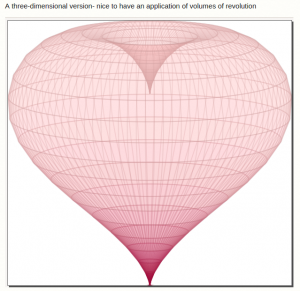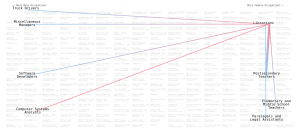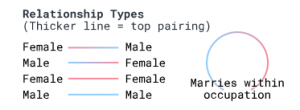New Journals Piggyback on arXiv by Emily Conover.
From the post:
A non-traditional style of scientific publishing is gaining ground, with new journals popping up in recent months. The journals piggyback on the arXiv or other scientific repositories and apply peer review. A link to the accepted paper on the journal’s website sends readers to the paper on the repository.
Proponents hope to provide inexpensive open access publication and streamline the peer review process. To save money, such “overlay” journals typically do away with some of the services traditional publishers provide, for example typesetting and copyediting.
Not everyone is convinced. Questions remain about the scalability of overlay journals, and whether they will catch on — or whether scientists will demand the stamp of approval (and accompanying prestige) that the established, traditional journals provide.
The idea is by no means new — proposals for journals interfacing with online archives appeared as far back as the 1990s, and a few such journals are established in mathematics and computer science. But now, say proponents, it’s an idea whose time has come.
The newest such journal is the Open Journal of Astrophysics, which began accepting submissions on December 22. Editor in Chief Peter Coles of the University of Sussex says the idea came to him several years ago in a meeting about the cost of open access journals. “They were talking about charging thousands of pounds for making articles open access,” Coles says, and he thought, “I never consult journals now; I get all my papers from the arXiv.” By adding a front end onto arXiv to provide peer review, Coles says, “We can dispense with the whole paraphernalia with traditional journals.”
Authors first submit their papers to arXiv, and then input the appropriate arXiv ID on the journal’s website to indicate that they would like their paper reviewed. The journal follows a standard peer review process, with anonymous referees whose comments remain private.
When an article is accepted, a link appears on the journal’s website and the article is issued a digital object identifier (DOI). The entire process is free for authors and readers. As APS News went to press, Coles hoped to publish the first batch of half-dozen papers at the end of January.
…
My Archive for the ‘Peer Review’ Category has only a few of the high profile failures of peer review over the last five years.
You are probably familiar with at least twice as many reports as I have reported in this blog on the brokenness of peer review.
If traditional peer review is a known failure, why replicate it even for overlay journals?
Why not ask the full set of peers in a discipline? That is the readers of articles posted in public repositories?
If a book/journal article goes uncited, isn’t that evidence that it:
Did NOT advance the discipline in a way meaningful to their peers?
What other evidence would you have that it did advance the discipline? The opinions of friends of the editor? That seems too weak to even suggest.
Citation analysis isn’t free from issues, Are 90% of academic papers really never cited? Searching citations about academic citations reveals the good, the bad and the ugly, but it has the advantage of drawing on the entire pool of talent that comprises a discipline.
Moreover, peer review would not be limited to a one time judgment of traditional peer reviewers but on the basis of how a monograph or article fits into the intellectual development of the discipline as a whole.
Which is more persuasive: That editors and reviewers at Science or Nature accept a paper or that in the ten years following publication, an article is cited by every other major study in the field?
Citation analysis obviates the overhead costs that are raised about organizing peer review on a massive scale. Why organize peer review at all?
Peers are going to read and cite good literature and more likely than not, skip the bad. Unless you need to create positions for gate keepers and other barnacles on the profession, opt for citation based peer review based on open repositories.
I’m betting on the communities that silently vet papers and books in spite of the formalized and highly suspect mechanisms for peer review.
Overlay journals could publish preliminary lists of articles that are of interest in particular disciplines and as community-based peer review progresses, they can publish “best of…” series as the community further filters the publications.
Community-based peer review is already operating in your discipline. Why not call it out and benefit from it?









